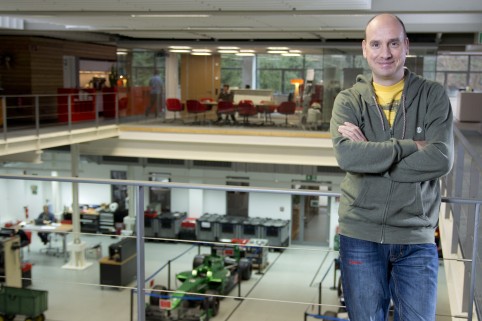
Integrated media distribution networks can provide cost-effective and flexible signal routing, explains Thomas Riedel, CEO, Riedel Communications
In today’s competitive media marketplace, companies that enjoy a high degree of technical agility are the businesses best positioned to launch new services and take advantage of new opportunities. Deploying flexible, reliable, and cost-effective communications and signal transport solutions, they stand to streamline their operations, reduce their costs, and improve their competitive advantage.
Riedel has worked with signal network architectures for many years to provide our customers with just these types of solutions. Inherently signal-agnostic network architectures not only support flexible cabling topographies but also enable use of built-in signal-processing capabilities in handling any signal at
any node.
We understand that our customers don’t want a slapped-together hodge-podge of systems; they want integrated solutions that work flawlessly together under the umbrella of a single monitoring and control system. When a solution includes key signal processing functions, the user can reduce the cost and complexity associate with using other ‘boxes’ to perform these tasks. This is why we equipped our MicroN 80G media distribution network with robust integrated processing capabilities.
As far as flexibility, MicroN can serve as a breakout box for our MetroN router and extend connectivity beyond the fibre I/Os to any type of video and audio I/O required. MicroN can also stand by itself as a 12×12 router with signal processing capabilities. Fully implemented, Micron can act as a central video router or as a de-centralised router up to 192 x 192! It is exactly this kind of operational flexibility that broadcasters are looking for since every show has different requirements.
Though a relatively new Riedel product, the MicroN already plays a valuable role in leading media facilities. Ericsson Broadcast Services in the Netherlands is using 10 of the units in a point-to-point configuration to move up to 60 HD feeds between its own master control facility and the Fox Sports Holland Broadcast facility in Hilversum. Though these devices represent a relatively small part of overall broadcast operations, they have made a sizeable impact on the efficiency and flexibility with which Ericsson Broadcast Services can handle a high volume of
HD signals.
Media facilities today also want to be able to choose a standard that works best for them. We deal with this demand by providing I/O for several standards — AES67/RAVENNA or AVB — in our new Tango and Smartpanel solutions. IBC2015 gives us the opportunity to showcase how we can support multiple standards and demonstrate how they afford users greater flexibility in selecting and deploying the equipment and infrastructure that best meets their requirements.







